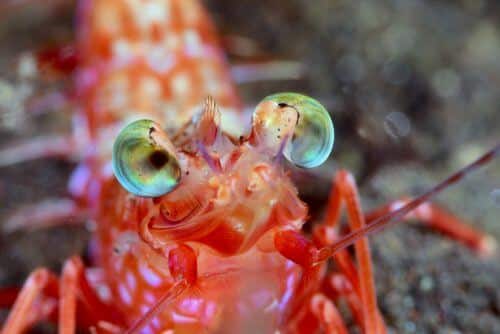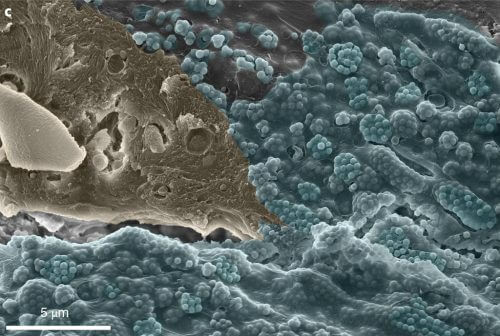Over millions of years of evolution, the shrimps have developed eyes with a unique structure that allow them to see what is happening in their immediate environment - the bottom of the sea

The world is seen in the eye of the beholder. But what if the observer is Hasilon ("shrimp")? The answer to this question is not simple, especially if you remember that the shrimp live on the bottom of the sea, at a depth of several tens of meters, in places where little light reaches them. Dr. Ben Palmer from the Department of Structural Biology (currently at Ben-Gurion University of the Negev) and Dr. Venkata Jisoriya Yalfargade from the Department of Physics of Complex Systems in collaboration with colleagues from Ben-Gurion University of the Negev, from the Department of Chemical Research Infrastructures and together with Prof. Dan Oron, Prof. Steve Weiner and Prof. Leah Eddy examined this question, and discovered, to their surprise, that the shrimps have developed, over millions of years of evolution, eyes with a unique structure, which allow them to see what is happening in their immediate environment, in the depths of the sea. Their research findings were recently published in the scientific journal Nature Nanotechnology.
The Hasilon eye is not based on a lens, but on a series of nanometer-sized mirrors, which form a concave structure that functions as a kind of lens. Such an eye structure is known and recognized in nature, but in order to better understand the roots of the shrimp's good eyesight, the scientists decided to take a closer look at the material from which these mirrors are made. In fact, it turns out that this material also "wraps" the "pixels" located in the retina. The pixels are made of light-sensitive material, and are arranged in the retina in star-like structures with seven "corners", with a single pixel located in each corner of the structure - wrapped in the same material from which the nanometric mirrors on the outside of the eye are made.

The scientists discovered that each pixel is placed in a "bath of balls", each of which is made of a kind of "rag ball", made up of several tens of nanometer plates that have the property of double refraction. Thus, the refractive index of the material that makes up each sphere is different in each direction of light movement. Along the shell of the sphere, the refractive index is close to 2 (among the highest refractive indices known in nature, as far as organic matter is concerned), while towards the center of the sphere - it is 1.4, only slightly higher than the refractive index of water. This structure allows optimal reflection of blue light even in very thin layers. Since the entire structure excels at reflecting light back, a photon that is not absorbed is reflected again and again from the shell, until it "finds a suitable place" and is absorbed in the light-sensitive material - which means that the hasilon notices the little light, deep below the surface of the sea, and sees what is in front of it. The scientists say that if we know how to produce nanometer spheres similar to those found in the Hasilon's eye, we may be able to produce advanced optical coatings and colorants in extremely thin layers.
In the world, more than 7 million tons of shrimp are eaten every year, most of them are grown in farms.

7 תגובות
to the Messianic Christ,
Funny how you state that he created them. It's a shame you don't say they evolved into what the people are in the process of evolution.
By the way, evolution does not necessarily last millions of years. Today it is known that the mechanism of genetic mutation allows evolution to develop in "jumps".
Evolution enables development,
Science enables the development of human society.
Only in religion is the whole truth known and everything is fixed, therefore the religious society is conservative, fixed, retarded and backward.
The name of God Jehovah also means:
"Yes", "Hoh". In other words, the God of the religious only deals with the present but not the future and the Hebrew, only in a way that is convenient for him, not in an objective and critical way.
In conclusion: Religion-Out. Science(Yin)-in
to the messiah
Funny how you state that God created them. It's a shame you don't say that developmental evolution allowed them to develop such eyes, and not necessarily that it took millions of years. Evolution progresses in "big" leaps, through the mechanism of genetic mutations.
It was worth reading - if only for the Saifa
It's amazing that even in something as insignificant (so to speak) as a shrimp, you can find natural wonders and it's lucky that there are people who look for and find these wonders.
Funny how you state that it took millions of years for them to develop such eyes. It's a shame you don't say that Jehovah created them that way.
Thanks, I found in the image search - humpback shrimp, not mantis shrimp..
Is it a shrimp or a mantis shrimp that has super vision and is close to the praying mantis?